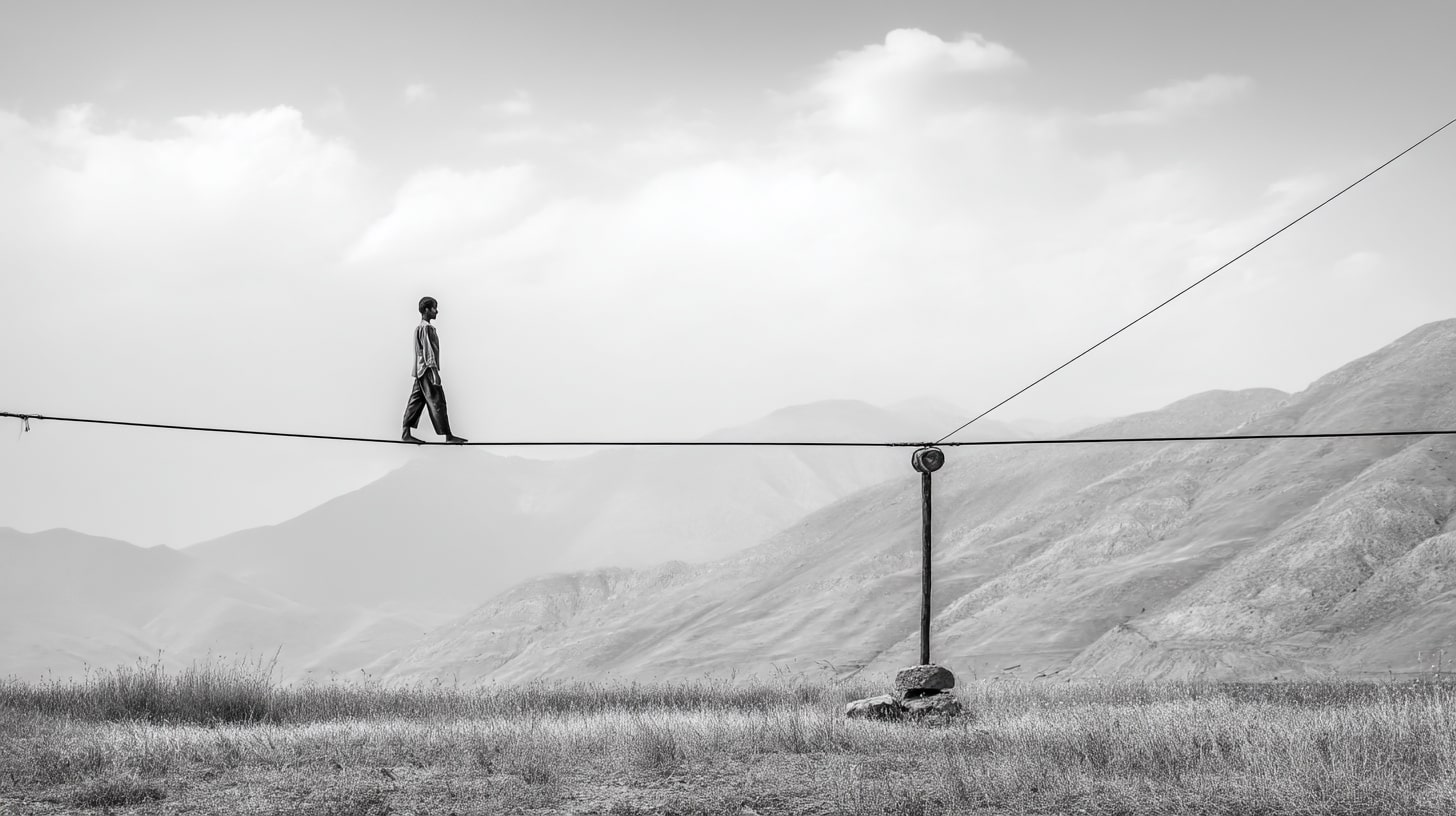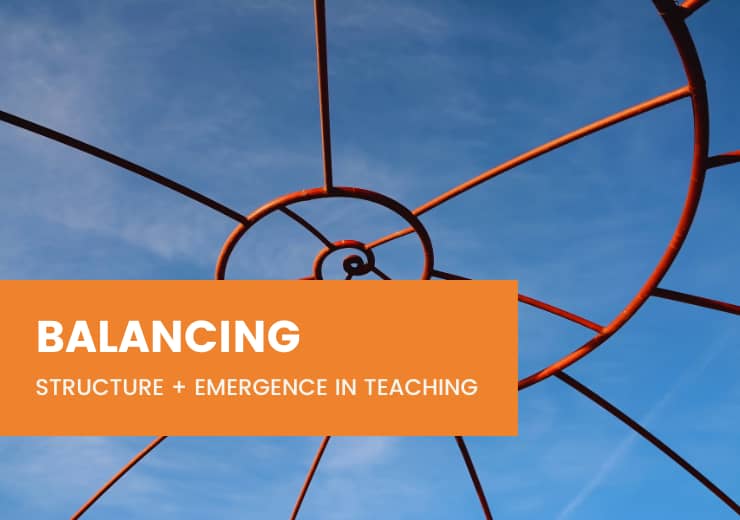Editor’s Note: While this article comes from a nurse’s perspective, the heart of it—caring deeply for others while trying to care for yourself—will resonate with educators in every setting. The self-care reminders shared here are meaningful and relevant, no matter what or whom you teach.
As nurses, we train to provide care for others—whether it is in the hospital, clinic, or community. However, many of us also play the role of caregiver within our own families, particularly during times of tremendous grief and stress. Whether it is caring for a sick loved one, supporting a family member through a crisis, or managing the aftermath of a loss, the emotional and physical demands of being the nurse in the family can feel overwhelming. In these challenging times, it is crucial to maintain balance—not only for the sake of those we care for, but also for our own well-being.
This article will explore how nurses can manage the delicate balance of caring for family members while prioritizing their own health and emotional resilience in the face of grief and stress.
The Emotional Toll of Being the Family Nurse
Grief and stress affect individuals differently, but for the nurse who is also a family member, the role can carry extra weight. The skills that we so readily apply in a professional setting—compassion, empathy, attentiveness—become deeply personal when applied to family members.
Watching a loved one suffer or navigating the complexities of a loved one’s health challenges can trigger feelings of helplessness, sadness, and frustration (Bijnsdorp, Onwuteaka-Philipsen, Boot, van der Beek, & Pasman, 2022). At the same time, the desire to “fix” or “care for” can amplify these emotions, making it harder to separate our professional instincts from the personal bond we share with the individual.
The emotional toll of being the nurse in the family can exacerbate the sense of responsibility, particularly when there are multiple tasks to juggle, such as managing medication, coordinating care, and offering emotional support. In addition to the physical and logistical demands, the emotional labor of caregiving can lead to burnout, depression, or even anxiety (Mir, Bakht, and Shah, 2024).
Acknowledging the Need for Self-Care
As a nurse, you are educated in taking care of others, but it is easy to forget that caring for yourself is equally important. The notion of self-care often takes a backseat when caregiving becomes all-consuming (Trees Bolt, 2025). However, neglecting your own needs amid grief and stress can be detrimental to both your own health and your ability to care for your loved one effectively.
To maintain your physical, emotional, and mental well-being, it is essential to establish self-care practices, even during the most demanding times. Here are some strategies for managing stress and grief while continuing to be there for your family:
Set Boundaries
It can be difficult to set boundaries when you are deeply engaged in the care of a loved one. However, it is essential to recognize that you cannot be available to others 100% of the time. Setting boundaries means giving yourself permission to take breaks, asking for help, and recognizing when you need rest. For example, you may need to limit the number of visitors or care tasks during certain hours to allow for self-care time. Clear communication with family members about your needs can help prevent feelings of guilt or resentment from building up.
Delegate Tasks When Possible
As a nurse, your training and education equips you to care for others, but it is crucial to remember that tending to your own well-being is vital; caregiving does not have to be a solo endeavor. Delegate tasks, when possible, whether it is managing household chores, running errands, or organizing transportation for appointments (Alanazi, Shaban, Ramadan, Zaky, Mohammed, Amer, & Shaban, 2023). Family members, friends, or professional services can offer support—whether it is a neighbor preparing meals, a sibling helping with daily routines, or a caregiver service stepping in for several hours. Remember, delegating is not a sign of weakness; it is a way to preserve your own energy and ensure that you can give quality care without burning out.
Seek Emotional Support
Grief and stress can feel isolating, and it is easy to fall into the trap of thinking you must carry the burden alone. Seek support from others who understand your emotional and physical needs (Fallek, Tattelman, Browne, Kaplan, & Selwyn, 2019; Rahmani, Hosseinzadeh, & Gholizadeh, 2023). This could include talking to a trusted friend, joining a support group, or speaking with a therapist who specializes in grief or caregiver stress. Sharing your feelings with others allows you to process emotions that may be difficult to express otherwise.
As a nurse, you understand the importance of emotional health, but it is easy to neglect your own emotional needs when you prioritize taking care of others. Regularly checking in with yourself can help you identify any signs of distress or burnout before they become overwhelming.
Practice Mindfulness and Stress-Relief Techniques
In times of grief and stress, practicing mindfulness or stress-relief techniques can be incredibly beneficial. Simple practices like deep breathing, meditation, or even a quick walk outside can help reduce anxiety and bring you back to the present moment (Kong, Tong, & Lui, 2024).
Yoga, journaling, or other forms of creative expression can also be valuable ways to process emotions in a safe and constructive manner.
Mindfulness helps counteract the tendency to become overwhelmed by the magnitude of the situation. By staying grounded, you can better manage your responses to stress and provide more compassionate care to your loved one.
Maintain Healthy Routines
During times of grief and caregiving, it can be tempting to put personal routines on hold. However, maintaining healthy habits—such as regular sleep, eating nutritious meals, and staying physically active—can significantly improve your ability to cope with stress (Bodziony, 2022). Sleep and nutrition are critical to emotional resilience, and regular physical activity releases endorphins, which can improve mood and reduce feelings of anxiety or sadness.
While it may feel impossible to prioritize exercise or sleep when you are juggling caregiving responsibilities, even small steps—like taking short walks or prioritizing a 10-minute rest period—can help replenish your energy and improve your ability to care for others.
Acknowledge and Accept Your Emotions
Being the nurse in the family does not mean you have to suppress your emotions. It is important to recognize and accept your feelings of grief, sadness, frustration, and even anger. These emotions are a normal part of caregiving and loss. By acknowledging and processing your feelings, you can better manage them and avoid emotional exhaustion (Fallek, Tattelman, Browne, Kaplan, & Selwyn, 2019). Give yourself permission to feel what you are feeling without judgment.
If you experience moments of doubt or guilt about needing time for yourself, remind yourself that you are better equipped to care for others when your own needs are met. Taking care of yourself is not selfish; it is necessary for sustaining your ability to support your family in the long term.
Conclusion
Being the nurse in the family during times of grief and stress is a profound responsibility that requires resilience, compassion, and self-awareness. However, it is vital to remember that you can only offer the best care to others when you take the time to care for yourself. By setting boundaries, delegating tasks, seeking support, practicing mindfulness, and maintaining healthy routines, you can better navigate the challenges of caregiving while preserving your own well-being. Grief and stress are inevitable, but by taking initiative-taking steps to care for yourself, you can continue to be a source of strength for your family while ensuring that you remain emotionally and physically capable of facing the difficult road ahead.
Angie Timm earned her BSN (1991), from OSF St. Francis Medical Center College of Nursing in Peoria, IL. and MSN (2011) from University of Phoenix with an emphasis in Health Care Education. Angie Timm is an Assistant Professor at Saint Francis Medical Center College of Nursing, Peoria, Illinois.
Dr. Maureen Hermann earned her BSN (1995), MSN (2011), and DNP (2016), with an emphasis in leadership, from Saint Francis Medical Center College of Nursing in Peoria, IL. Dr. Maureen Hermann is an Associate Professor at Creighton University, Omaha, Nebraska.
References
Alanazi, M.A., Shaban, M.M., Ramadan, O.M.E., Zaky, M.E., Mohammed, H.H., Amer, F.G.M., & Shaban, M. (2024). Navigating end of life decision making in nursing: A systematic review of ethical challenges and palliative care practices. BMC Nurs 23, 467. https://doi.org/10.1186/s12912-024-02087-5
Bijnsdorp, D. M., Onwuteaka-Philipsen, B. D., Boot, C. R. L., van der Beek, Al, J., & Pasman, H. R. W. (2022). Caregivers burden at the end of life of their loved one: Insights from a longitudinal qualitative study among working family caregivers. BMC Palliative Care, 21(142). https://doi.org/10.1186/s12904-022-01031-1
Bodziony, MS. (2022). Creating a healthy grieving process. Society of Behavioral Medicine. Retrieved from https://www.sbm.org/healthy-living/staying-healthy-while-coping-with-grief
Fallek, R., Tatelman, E., Browne, T., Kaplan, R., & Selwyn, P. (2019). Helping healthcare providers and staff process grief through a hospital-based program. American Journal of Nursing, 119(7), 24-33.
Kong, Y., Tong, Z., & Liu, L. (2024). Nurses’ self-care levels and its related factors: A cross-sectional study. BMC Nurs 23, 835. https://doi.org/10.1186/s12912-024-02510-x
Trees Bolt, E.E. (2025). Nurses need care, too – How curbing self-sacrifice can prevent burnout. American Society of Registered Nurses. Retrieved from https://www.asrn.org/journal-nursing/3241-nurses-need-care-too%e2%80%94how-curbing-self-sacrifice-can-prevent-burnouts.html







